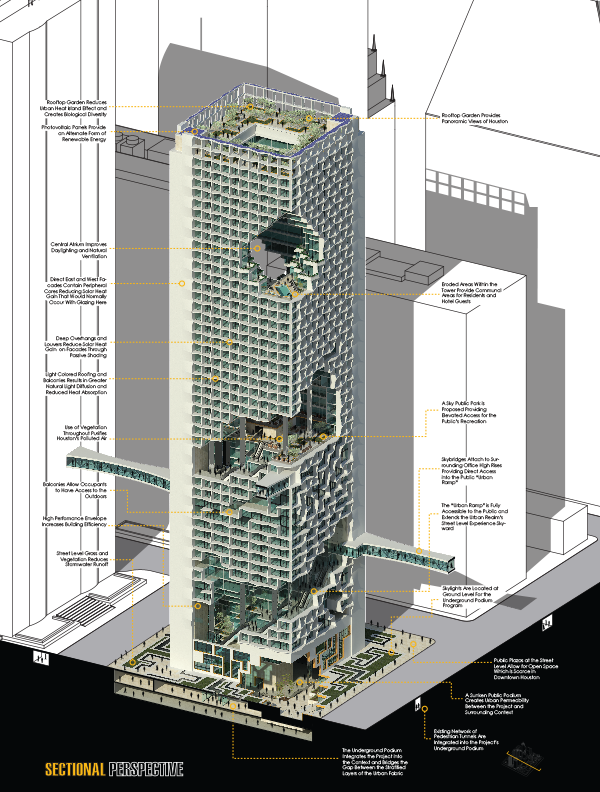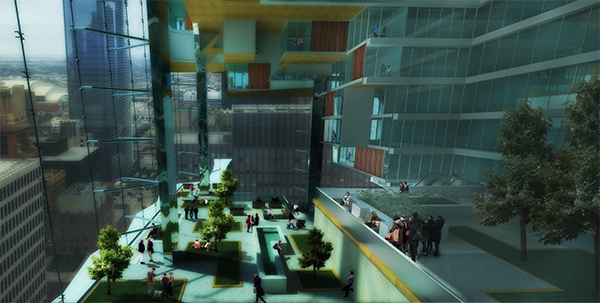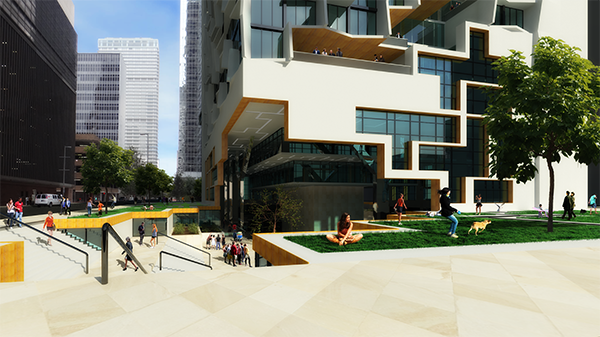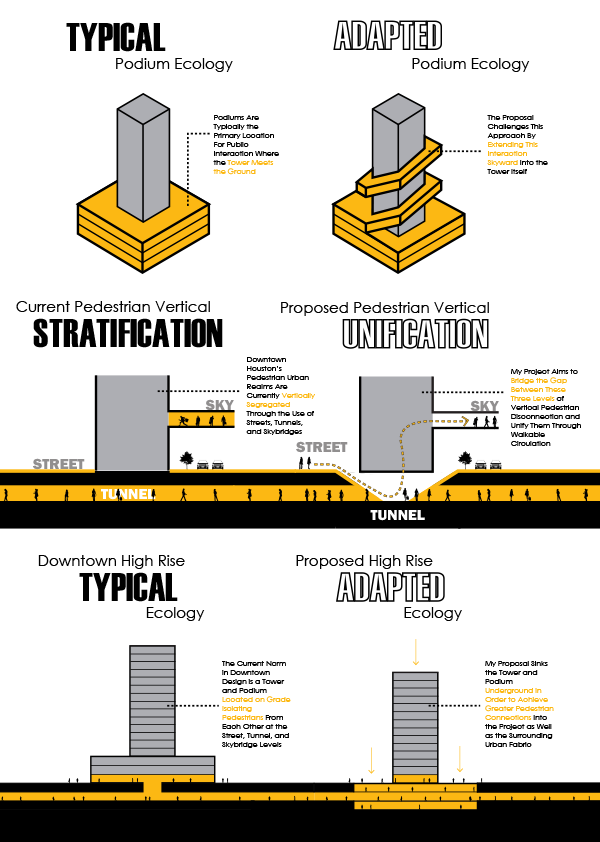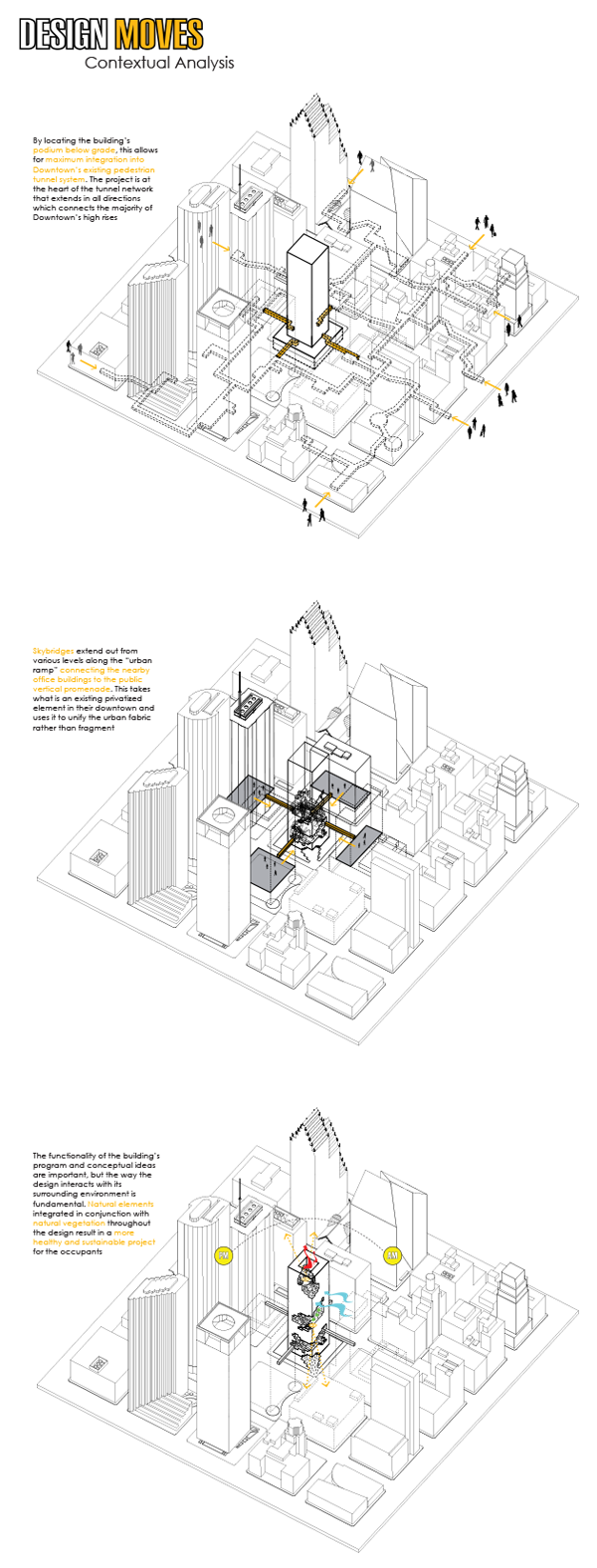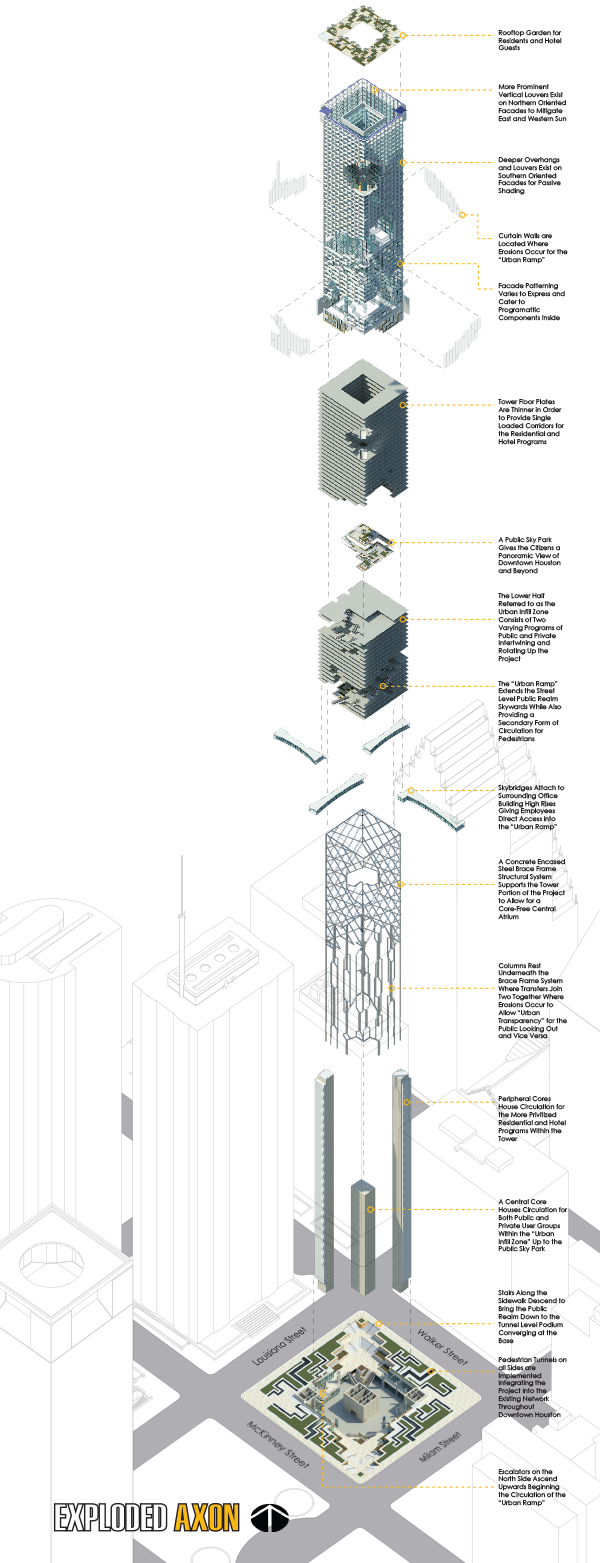This undergraduate thesis project by Camden Wade titled Urban Infiltration is a visionary and innovative tower that challenges the typical approach to the high rise typology in Downtown Houston by using “collective design.” In a downtown that lacks formal zoning regulations and, as a result, creates an exaggerated autonomous mindset for high rise development and their primarily office programs, this design takes a paradigm shift with a more holistic approach to the typology and explores how a high rise can be more beneficial to its environment from the large urban scale, architectural scale, and most importantly, the intimate human scale. This project approaches this design issue head on by creating a hybrid high rise that encourages a more sustainable and localized lifestyle through a delicate balance of programs, both public and private, that relate to one another in a more 3-dimensional and integrated way.
Rather than the typical tower that is primarily privatized and shut off from the public, this thesis proposes a built environment that encourages and nurtures this interaction by extending the public realm’s street level experience skyward through the use of the “urban ramp” and ending it in a public sky park 300 feet in the air. This design concept creates a social hub for the area while also allowing the public realm through the vertical promenade to stitch together Houston’s stratified urban fabric from its heavily programmed underground tunnels, to almost non-existent street life, and up to their floating sky bridges.
Urban Infiltration re-evaluates the role of the high rise within an urban setting by using a building typology which is infamous for segregating user groups and isolating its occupants from the surrounding context, to in fact do the opposite by unifying and uniting Downtown Houston’s urban environment.

